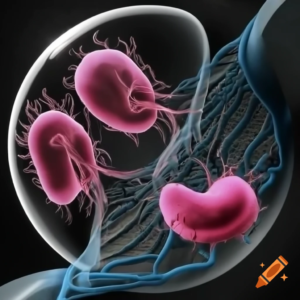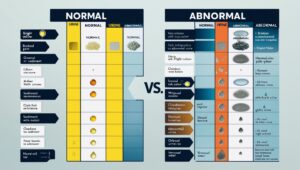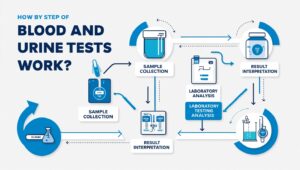Kidneys play a vital role in keeping your body healthy by filtering waste, balancing fluids, and producing essential hormones. However, kidney disease is often referred to as a “silent killer” because it can go unnoticed until it becomes severe. Detecting it early can make a significant difference in treatment outcomes.
In this blog, we’ll explore the top signs of kidney disease, how to test for it, steps for diagnosis, and effective treatment options—all in simple, friendly, and professional language.

What Is Kidney Disease?
Kidney disease occurs when your kidneys lose their ability to function efficiently. This can happen gradually (chronic kidney disease) or suddenly (acute kidney failure). The causes range from high blood pressure and diabetes to genetic factors and lifestyle choices.
Top Signs of Kidney Disease
Spotting the early signs of kidney disease can help you seek timely medical care. Look out for these common symptoms:
- Fatigue and Weakness
Reduced kidney function can lead to a buildup of toxins in the blood, causing fatigue and low energy levels. - Swelling in Ankles, Feet, or Hands
Poor kidney function can cause fluid retention, resulting in visible swelling, especially in the lower extremities. - Changes in Urination
- Increased or decreased frequency.
- Foamy or bubbly urine (a sign of protein leakage).
- Blood in the urine.
- Persistent Nausea or Vomiting
When toxins accumulate, they can make you feel nauseated or cause an upset stomach. - Shortness of Breath
Excess fluid may build up in the lungs or cause anemia, both leading to difficulty breathing. - Itchy Skin
A buildup of waste in the bloodstream can lead to dry, itchy skin. - High Blood Pressure
Kidneys and blood pressure are closely linked; poorly functioning kidneys can exacerbate hypertension.

How to Test for Kidney Disease
Testing for kidney disease involves simple steps. If you suspect an issue, consult a doctor for the following tests:
1. Blood Tests
- Creatinine Test: Measures the waste product creatinine to evaluate kidney function.
- Glomerular Filtration Rate (GFR): Assesses how well your kidneys filter blood.
2. Urine Tests
- Albumin-to-Creatinine Ratio (ACR): Detects protein leakage in the urine.
- Urinalysis: Identifies abnormalities like blood, proteins, or glucose in the urine.
3. Imaging Tests
- Ultrasound or CT Scan: Provides a clear view of kidney size, structure, and potential blockages.
4. Biopsy
In rare cases, a small sample of kidney tissue is analyzed to determine the exact cause of the damage.
Diagnosing Kidney Disease
Once test results are available, a healthcare professional will evaluate:
- The severity of the disease using GFR levels (Stages 1–5 of chronic kidney disease).
- Underlying causes like diabetes, infections, or genetic factors.
Treatment Options for Kidney Disease
Treatment plans vary depending on the stage and cause of the disease. Here’s a breakdown of the most effective strategies:

1. Lifestyle Modifications
- Dietary Changes: Follow a kidney-friendly diet low in sodium, potassium, and phosphorus. Increase fresh vegetables, lean protein, and whole grains.
- Regular Exercise: Maintain a healthy weight and improve circulation.
2. Medications
- Blood Pressure Medications: Such as ACE inhibitors or ARBs.
- Diuretics: To reduce fluid retention.
- Phosphate Binders: Manage phosphorus levels.
3. Dialysis
In advanced stages, dialysis may be required to filter toxins from the blood.

4. Kidney Transplant
For end-stage kidney disease, a transplant is often the most effective long-term solution.
How to Prevent Kidney Disease
Prevention is better than cure! Follow these tips to maintain healthy kidneys:
- Stay hydrated (drink plenty of water).
- Avoid excessive salt and sugar.
- Monitor your blood pressure and blood sugar levels.
- Avoid overuse of painkillers or anti-inflammatory drugs.
- Schedule regular kidney function tests if you have risk factors like diabetes or a family history of kidney problems.
When to See a Doctor
Don’t wait for symptoms to worsen. If you notice any of the signs listed above or have underlying risk factors, consult a nephrologist or healthcare provider promptly.
Conclusion
Kidney disease is manageable if caught early. By understanding the signs, undergoing the right tests, and following a tailored treatment plan, you can protect your kidneys and lead a healthy life. Don’t ignore small symptoms—they could be your body’s way of alerting you.
If you found this blog helpful, share it with friends and family. Early detection saves lives!
Call-to-Action
Worried about your kidney health? Take action today:
- Schedule a check-up with your healthcare provider.
- Share your concerns and symptoms openly.
- Adopt a kidney-friendly lifestyle now!
